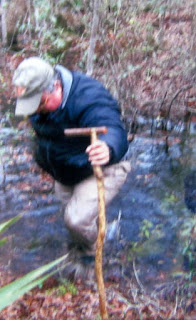She was at the final "Victory" convention of the National American Woman Suffrage Association, the last convention before this venerable organization became the League of Women Voters, an "educational" and "nonpartisan" organization that, ironically, did not threaten male privilege.
 |
| Catt leads one of the dozens of Woman Suffrage Parades held in DC. |
Mrs. Catt had learned, the hard way, how politics works. "Going to big political dinners, where you will be welcomed, is not enough," she went on. "You need to stay the course, you need to get to the center."
"If you stay long enough," she said, "keeping your eyes open, you will discover a little denser group, which we might call the umbra of the political party. You won't be so welcome there as at those big dinners. Those are the people who are planning the platforms and picking out the candidates, and doing the work which you and the men voters will be expected to sanction at the polls. You won't be so welcome there, but that is the place to be."She went on, sharing her knowledge of the political process, emphasizing how the system worked and what it would take "to make women's vote count."
"And if you stay there long enough and are active enough, you will see something else--the real thing in the center, with the door locked tight, and you will have a long hard fight before you get behind that door, for there is the engine that moves the wheels of your party machinery....If you really want women's vote to count, make your way there."It has taken women another 96 years to make their way there, to get to the "umbra" and the "engine room" of the political process.
And now that women have forged their way to the center, step by step, election after election, now that women have achieved some political power in the once all-male bastian of politics, time has stopped. Are we at the end of the journey for equal rights and opportunities for women? Are we ready for a woman president?
The answer, sadly is "no." It is still a battle.
Now powerful women are suspect. Part of the corrupt system. Attacked on the right and left. Not letting men in. Favoring one candidate over another. Imagine. How could they? Oh my god, playing politics.
This presidential campaign has, indeed, tapped into a reservoir of racism, as Jimmy Carter recently said, and I would add a reservoir of patriarchy and anti-feminism, too, verging on hatred of women's power. It is taking its toll.
Now, the politicos. the presidential candidates on the right and left, their followers and many pundits, argue that it's time for principle to take precedence over pragmatism, time for ideals of some sort to take precedence over working for a qualified woman presidential candidate, a women who has been through battles of her own, vilified, hammered, kicked back, hounded, demonized beyond recognition.
Now it's time for reform that excludes powerful women from the top. Time to get rid of Debbie Wasserman-Shultz. Time to move Hillary to the sidelines. Time for male politicians to do their thing, as if women have not been the moving force behind ALL reform movements in our country since the beginning. Yes, women, who have led all major reform efforts, their contributions seldom acknowledged in our history books.
Now breaking the highest glass ceiling of all, we are scolded, should take a back seat to the economic and social reform that our country needs. As if a woman president at the helm would not take on that fight. As if it would be better to have a man leading any such effort. Stanton and Anthony and Catt must be turning over in their graves.
"It might help," Flexner concluded, "if we remember more often not only the lonely vigils of Washington at Valley Force and Lincoln in the White House, but the doubts and fears that racked Angelina Grimke when she spoke out about slavery and even the seemingly intrepid Elizabeth Cady Stanton when she got up to make her first public speech in the tiny Wesleyan chapel in Seneca Falls in 1848. Perhaps in learning more of the long journey to equal rights and justice, up to our present time, we can face our own future with more courage and wisdom, and greater hope."
Main source: Eleanor Flexner's Century of Struggle: The Woman's Rights Movement in the United States (Harvard press, 1996 edition; first published 1959). I wish every citizen would read it, from beginning to end, word for word.













